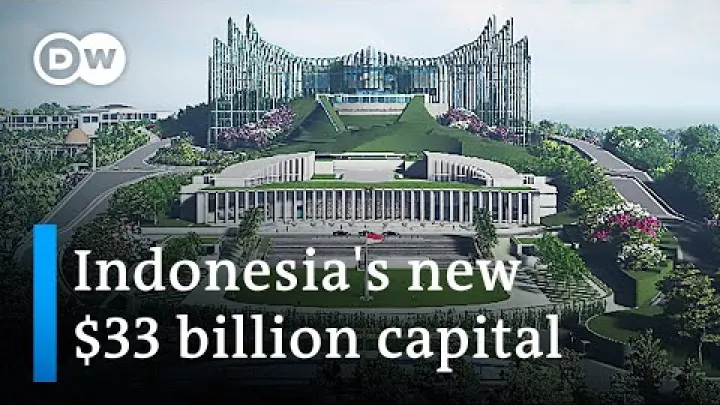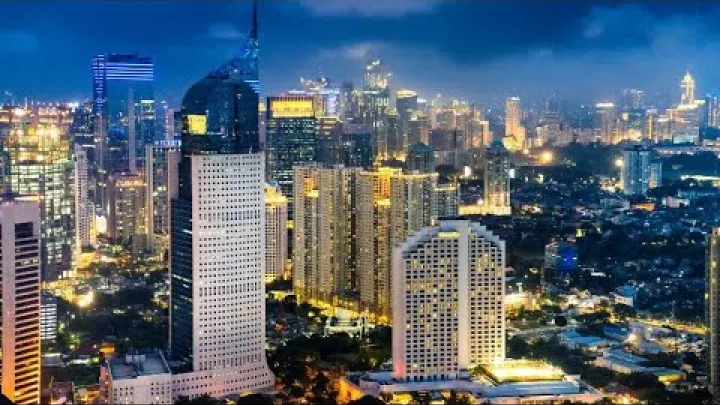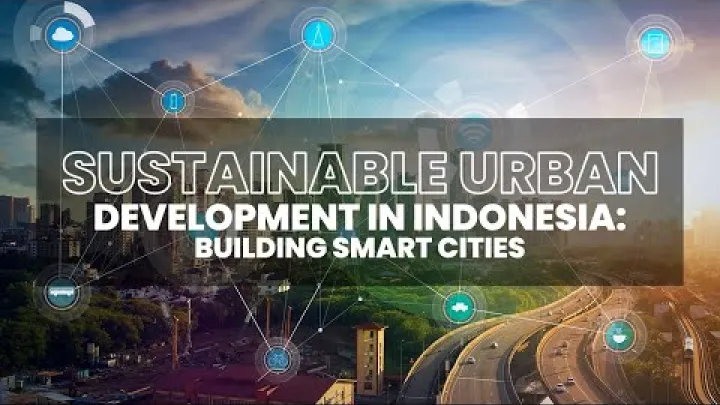Indonesia City Guide: Major Cities, Capital, Culture, and Travel Tips
Indonesia is a country of remarkable urban diversity, where ancient traditions blend with modern city life. From the bustling streets of Jakarta to the cultural heart of Yogyakarta and the tropical allure of Bali, each Indonesia city offers a unique experience. Understanding the structure, culture, and practical aspects of Indonesia’s cities is essential for travelers, students, and professionals alike. This comprehensive guide will help you navigate Indonesia’s major cities, learn about the capital, explore city rankings, and discover essential travel tips for a smooth and enriching journey.
Overview of Cities in Indonesia
Indonesia’s cities are more than just population centers—they are administrative units with distinct roles in governance, culture, and daily life. The country is divided into provinces, which are further subdivided into regencies (kabupaten) and cities (kota). Cities in Indonesia are typically more urbanized and densely populated than regencies, which often cover larger rural areas. Understanding how cities are classified and governed is important for both visitors and residents, as it affects everything from public services to local regulations.
The distinction between a city and a regency is significant. Cities (kota) are generally focused on non-agricultural activities, have higher population densities, and offer more developed infrastructure and services. Regencies, on the other hand, often encompass rural communities and agricultural land. City status brings greater autonomy in local governance, allowing for more tailored public services, better infrastructure, and increased investment in education and healthcare. For travelers and new residents, knowing whether you are in a city or regency can impact your access to amenities, transportation, and administrative processes.
How are cities classified in Indonesia?
Cities in Indonesia are classified based on legal and administrative criteria set by the national government. The main distinction is between “kota” (city) and “kabupaten” (regency). To be designated as a city, an area must meet specific requirements, including a minimum population threshold, a predominantly non-agricultural economy, and the presence of urban infrastructure such as roads, schools, and hospitals. The process of city classification is governed by national laws and involves approval from both provincial and central authorities.
There are also different types of cities in Indonesia. Some cities, like Jakarta, have special status due to their size and national importance. Others, such as Yogyakarta, are known for their cultural heritage and historical significance. Examples of city types include provincial capitals, autonomous cities, and special administrative regions. Each type of city has its own governance structure, budget, and responsibilities, which can affect everything from local elections to the provision of public services.
How many cities are there in Indonesia?
As of the latest official data, Indonesia has 98 cities (kota) spread across its vast archipelago. This number can change as new cities are established or existing regencies are upgraded to city status. In recent years, there have been several changes, with some regions gaining city status to better manage urban growth and provide improved services to residents.
The distribution of cities is not uniform across Indonesia. The island of Java, for example, has the highest concentration of cities due to its large population and economic activity. Other islands, such as Sumatra, Sulawesi, and Kalimantan, also have important cities, but these are often more spread out. Understanding the regional distribution of cities can help travelers plan their routes and appreciate the diversity of urban life across Indonesia’s many islands.
What is the Capital City of Indonesia?
The capital city of Indonesia is a central topic for anyone interested in the country’s political, economic, and cultural life. Currently, Jakarta serves as the capital, acting as the seat of government, business, and international relations. However, Indonesia is in the process of relocating its capital to a new city called Nusantara, located on the island of Borneo. This move is significant, reflecting Indonesia’s ambitions for balanced development and addressing challenges faced by Jakarta.
Jakarta has long been the heart of Indonesia, but rapid urbanization, congestion, and environmental concerns have prompted the government to plan a new capital. The transition to Nusantara is expected to take place over several years, with the initial phases already underway. It is important to note that, as of now, Jakarta remains the official capital, and many government functions are still based there. The move to Nusantara aims to create a more sustainable and strategically located capital, while also dispelling common misconceptions that Jakarta will lose all its importance.
Jakarta: The Current Capital
Jakarta, officially known as the Special Capital Region of Jakarta (DKI Jakarta), has been Indonesia’s capital since the country’s independence in 1945. The city’s history stretches back centuries, having served as a major port and trading hub under various names, including Batavia during the Dutch colonial era. Today, Jakarta is the largest city in Indonesia, home to over 10 million people and the center of government, finance, and culture.
As the capital, Jakarta hosts the presidential palace, national parliament, and most foreign embassies. The city is known for its dynamic business environment, diverse population, and vibrant arts scene. However, Jakarta also faces significant challenges, such as traffic congestion, flooding, and air pollution. Despite these issues, Jakarta remains a vital hub for both Indonesians and international visitors, offering a wide range of attractions, from historical sites to modern shopping centers.
Nusantara: The New Capital
Nusantara is the name of Indonesia’s planned new capital city, currently under development in East Kalimantan on the island of Borneo. The decision to move the capital was announced in 2019, with the goal of reducing the burden on Jakarta and promoting more balanced national development. Nusantara is envisioned as a smart, sustainable city that will serve as the new administrative center of Indonesia.
The development of Nusantara is a massive undertaking, involving the construction of government buildings, infrastructure, and residential areas. The location was chosen for its strategic position, lower risk of natural disasters, and potential to drive economic growth in eastern Indonesia. The relocation is expected to occur in stages, with some government offices moving as early as 2024 and full transition planned over the next decade. Nusantara’s development is closely watched both domestically and internationally, as it represents a bold step in Indonesia’s urban and national planning.
Major Cities in Indonesia
Indonesia is home to a diverse array of major cities, each playing a unique role in the country’s economy, culture, and tourism. These cities are not only centers of population but also hubs of innovation, education, and heritage. From the economic powerhouse of Surabaya to the cultural richness of Yogyakarta and the world-famous tourist destination of Bali, Indonesia’s cities offer something for everyone.
Each major city in Indonesia has its own distinct character and attractions. Jakarta is known for its skyscrapers and business districts, while Bandung is famous for its creative industries and cool climate. Medan serves as the gateway to Sumatra, and Makassar is a key port in eastern Indonesia. Bali, often referred to as a city but officially a province, is renowned for its beaches, arts, and vibrant nightlife. Understanding the unique features of each city can help travelers and residents make the most of their time in Indonesia.
Top 10 Largest Cities by Population
Indonesia’s largest cities are dynamic centers of activity, each with its own appeal. Here is a ranked list of the top 10 largest cities by population, along with notable characteristics:
| Rank | City | Population (approx.) | Notable Features |
|---|---|---|---|
| 1 | Jakarta | 10,600,000 | Capital city, business and government hub |
| 2 | Surabaya | 2,900,000 | Major port, industrial center |
| 3 | Bandung | 2,500,000 | Education, creative industries, cool climate |
| 4 | Medan | 2,400,000 | Gateway to Sumatra, diverse cuisine |
| 5 | Bekasi | 2,500,000 | Industrial area, Jakarta metropolitan region |
| 6 | Tangerang | 2,200,000 | Business parks, close to Jakarta airport |
| 7 | Depok | 2,100,000 | University city, Jakarta metropolitan area |
| 8 | Semarang | 1,700,000 | Historic port, Javanese culture |
| 9 | Palembang | 1,600,000 | Historic city, Musi River, culinary heritage |
| 10 | Makassar | 1,500,000 | Eastern Indonesia’s main port, gateway to Sulawesi |
These cities are not only the largest by population but also play key roles in Indonesia’s economy, education, and tourism sectors.
Economic and Cultural Highlights
Indonesia’s major cities are economic engines, each specializing in different industries and cultural traditions. Jakarta leads in finance, government, and media, while Surabaya is known for shipping, manufacturing, and trade. Bandung stands out for its technology startups, fashion, and creative arts, and Medan is a center for agribusiness and culinary diversity.
Bali, while not a city in the administrative sense, is globally recognized for its unique Hindu culture, festivals, and arts scene. Major events such as the Jakarta International Java Jazz Festival, Surabaya’s Cross Culture Festival, and Bali’s Nyepi (Day of Silence) attract visitors from around the world. These highlights make Indonesia’s cities vibrant places to live, work, and explore.
City Rankings and Comparisons
Comparing Indonesia’s cities provides valuable insights for residents, investors, and travelers. Rankings based on population, economic output, and sustainability initiatives reveal the strengths and challenges of each city. Understanding these rankings can help you choose where to live, work, or visit, and offer a glimpse into Indonesia’s urban development trends.
Population rankings show where the largest urban centers are located, while economic comparisons highlight cities with the most robust industries and job opportunities. Sustainability and smart city initiatives are increasingly important, as cities strive to improve quality of life and address environmental challenges. The following tables and lists present up-to-date data and discuss what these rankings mean for daily life and future growth in Indonesia’s cities.
Population Rankings
Indonesia’s urban population continues to grow, with cities expanding rapidly due to migration and natural growth. The latest data shows that Jakarta remains the most populous city, followed by Surabaya, Bandung, and Medan. Urbanization trends are especially strong on the island of Java, where several cities have populations exceeding one million.
Population growth brings both opportunities and challenges. While it can drive economic development and cultural vibrancy, it also puts pressure on infrastructure, housing, and public services. Cities like Bekasi, Tangerang, and Depok have seen significant growth as part of the Greater Jakarta metropolitan area, reflecting broader trends in urban expansion and suburbanization across Indonesia.
Economic Rankings
Economic activity in Indonesia is concentrated in several key cities. Jakarta leads the nation in terms of Gross Domestic Product (GDP), followed by Surabaya, Bandung, and Medan. Each city has its own economic strengths: Jakarta is the financial and business capital, Surabaya is a major industrial and shipping center, and Bandung excels in technology and creative industries.
| City | Estimated GDP (USD billions) | Leading Sectors |
|---|---|---|
| Jakarta | ~200 | Finance, services, government |
| Surabaya | ~40 | Manufacturing, shipping, trade |
| Bandung | ~25 | Technology, education, fashion |
| Medan | ~20 | Agribusiness, trade, services |
| Bali (Denpasar) | ~10 | Tourism, hospitality, arts |
These economic rankings highlight the diversity of Indonesia’s urban economies and the opportunities available in different regions.
Sustainability and Smart City Initiatives
Many Indonesian cities are investing in sustainability and smart city projects to improve quality of life and address environmental challenges. Jakarta has launched initiatives to reduce flooding, improve public transportation, and promote green spaces. Bandung is recognized for its smart city programs, including digital services for residents and innovative waste management solutions.
Other cities, such as Surabaya, have implemented successful recycling campaigns and urban farming projects. The development of Nusantara as the new capital is also centered on sustainability, with plans for renewable energy, efficient public transport, and green infrastructure. These efforts demonstrate Indonesia’s commitment to building cities that are not only economically vibrant but also environmentally responsible and technologically advanced.
Travel and Practical Information
Traveling between Indonesia’s cities is an exciting way to experience the country’s diversity. Whether you are a first-time visitor or a long-term resident, understanding practical details such as time zones, transportation options, and cost of living can make your journey smoother and more enjoyable. Indonesia spans three time zones, and each major city offers different transportation networks and living costs.
For travelers, it is important to know airport codes, the best ways to move between cities, and how to budget for daily expenses. Intercity travel is possible by air, rail, bus, and ferry, with each method offering its own advantages. The cost of living varies widely, with Jakarta and Bali generally being more expensive than other cities. By planning ahead and understanding these practical aspects, you can make the most of your time in Indonesia’s vibrant urban centers.
Time Zones in Indonesian Cities
Indonesia covers three main time zones, which can affect travel plans and business schedules. The time zones are:
- Western Indonesia Time (WIB, UTC+7): Includes Jakarta, Bandung, Surabaya, and most of Sumatra and Java.
- Central Indonesia Time (WITA, UTC+8): Covers Bali, Makassar, Denpasar, and parts of Kalimantan and Sulawesi.
- Eastern Indonesia Time (WIT, UTC+9): Applies to cities in Papua and the Maluku Islands, such as Jayapura and Ambon.
It is helpful to check local time upon arrival and use digital tools to avoid confusion. Most major cities operate on WIB or WITA, so plan accordingly if your itinerary includes destinations in different zones.
Transportation Between Cities
Indonesia offers a variety of transportation options for intercity travel. The most popular method is by air, with major airports in Jakarta (CGK), Surabaya (SUB), Bali (DPS), and Medan (KNO) connecting cities across the archipelago. Domestic flights are frequent and can be booked online or at travel agencies.
For travel on the island of Java, trains provide a comfortable and scenic way to move between cities like Jakarta, Bandung, Yogyakarta, and Surabaya. Long-distance buses and private car hires are also available, offering flexibility for routes not served by rail. Ferries connect islands such as Java, Bali, and Lombok, and are a good option for those seeking a more leisurely journey. When booking transportation, compare prices, check schedules in advance, and consider travel times, especially during holidays or peak seasons.
Cost of Living in Major Cities
The cost of living in Indonesia’s major cities varies depending on location, lifestyle, and personal preferences. Jakarta is generally the most expensive city, with higher prices for housing, dining, and transportation. Bali, especially in tourist areas like Seminyak and Ubud, can also be costly, particularly for accommodation and imported goods.
Other cities such as Surabaya, Bandung, and Yogyakarta offer a more affordable cost of living, with lower rents and cheaper local food. Factors affecting expenses include housing type, proximity to city centers, and choice of transportation. For budgeting, consider the following average monthly costs (in USD):
- Jakarta: $700–$1,500 (single person, moderate lifestyle)
- Bali: $600–$1,200 (single person, moderate lifestyle)
- Surabaya/Bandung/Yogyakarta: $400–$900 (single person, moderate lifestyle)
To save money, opt for local food, use public transportation, and consider shared accommodation. Always check for updated prices, as costs can fluctuate due to economic changes and seasonal demand.
Culture and Food in Indonesian Cities
Indonesia’s cities are melting pots of culture, history, and culinary delights. Each city has its own identity, shaped by centuries of migration, trade, and local traditions. From vibrant festivals to unique city nicknames and signature dishes, exploring the culture and food of Indonesia’s cities is a highlight for any visitor or resident.
The diversity of Indonesia’s urban culture is reflected in its music, art, architecture, and daily life. Local festivals celebrate everything from religious holidays to harvests and the arts. Food is a central part of city life, with each region offering specialties that reflect its history and resources. Whether you are sampling street food in Jakarta or attending a traditional dance performance in Yogyakarta, Indonesia’s cities promise a rich cultural experience.
City Nicknames and Identity
Many Indonesian cities are known by unique nicknames that reflect their character and history. Jakarta is often called “The Big Durian,” symbolizing its vibrant, sometimes overwhelming energy. Bandung is known as “The City of Flowers” (Kota Kembang) due to its lush gardens and cool climate. Surabaya is referred to as “The City of Heroes” (Kota Pahlawan) in honor of its role in Indonesia’s independence movement.
Other examples include Yogyakarta, called “The City of Students” (Kota Pelajar) for its many universities, and Makassar, known as “The Gateway to Eastern Indonesia.” These nicknames offer insight into each city’s identity and are often used in local branding, tourism campaigns, and cultural events. Learning about city nicknames can deepen your appreciation for Indonesia’s urban diversity and the pride residents take in their hometowns.
Local Culinary Specialties
Indonesian cities are famous for their diverse and flavorful cuisine. Each city boasts signature dishes that are a must-try for visitors. In Jakarta, try “soto Betawi,” a rich beef soup with coconut milk. Bandung is known for “batagor” (fried fish dumplings) and “mie kocok” (beef noodle soup). Surabaya’s specialty is “rawon,” a dark beef soup flavored with keluak nuts.
Yogyakarta is famous for “gudeg,” a sweet jackfruit stew, while Medan offers “bika ambon” (a chewy cake) and “soto Medan” (spicy coconut soup). In Bali, don’t miss “babi guling” (roast suckling pig) and “ayam betutu” (spiced chicken). These dishes can be found at local markets, street stalls, and traditional restaurants. Exploring local food is one of the best ways to experience the culture and hospitality of Indonesia’s cities.
Frequently Asked Questions
What is the capital city of Indonesia?
The current capital city of Indonesia is Jakarta. However, the government is in the process of relocating the capital to Nusantara, a new city being built in East Kalimantan on the island of Borneo. As of now, Jakarta remains the official capital.
How many cities are there in Indonesia?
Indonesia has 98 officially recognized cities (kota), with new cities occasionally established as regions develop and urbanize.
What are the largest cities in Indonesia by population?
The largest cities by population are Jakarta, Surabaya, Bandung, Medan, and Bekasi. These cities are major centers for business, education, and culture.
What is the new capital of Indonesia?
The new capital of Indonesia is called Nusantara. It is currently under development in East Kalimantan and is expected to gradually take over administrative functions from Jakarta in the coming years.
How do I travel between Indonesian cities?
You can travel between Indonesian cities by air (domestic flights), train (on Java), long-distance bus, or ferry (between islands). Major airports include Jakarta (CGK), Surabaya (SUB), and Bali (DPS).
What are the time zones in Indonesia?
Indonesia has three time zones: Western Indonesia Time (WIB, UTC+7), Central Indonesia Time (WITA, UTC+8), and Eastern Indonesia Time (WIT, UTC+9). Most major cities are in WIB or WITA.
What is the cost of living in Jakarta, Bali, and other cities?
The cost of living varies: Jakarta and Bali are generally more expensive, with average monthly costs for a single person ranging from $600 to $1,500. Other cities like Surabaya and Yogyakarta are more affordable.
What are the main cultural highlights of Indonesian cities?
Major cultural highlights include traditional festivals, local arts and crafts, city nicknames, and unique culinary specialties. Each city has its own identity and traditions worth exploring.
What are the postal codes for major Indonesian cities?
Postal codes vary by city and district. For example, Jakarta’s central area uses 10110, Surabaya’s central area uses 60111, and Denpasar (Bali) uses 80227. Always check the specific district for accurate codes.
Conclusion
Indonesia’s cities are vibrant, diverse, and full of opportunities for exploration. From the dynamic capital of Jakarta to the cultural treasures of Yogyakarta and the tropical paradise of Bali, each Indonesia city offers its own unique blend of history, culture, and modern life. Understanding city classifications, rankings, and practical travel information can help you make the most of your visit or stay. We encourage you to discover the rich urban landscapes of Indonesia, try local foods, and immerse yourself in the culture. If you have questions or want to share your experiences, feel free to reach out or leave a comment below—your journey through Indonesia’s cities is just beginning.
Your Nearby Location
Your Favorite
Post content
All posting is Free of charge and registration is Not required.








